Love Destroys Time is a public art installation in an abandoned apartment complex that was part of Exhibit Be, the largest collection of street art in the American South. Candy Chang and I developed a fable about lost love through a combination of collage and a six-part story that wraps along the facade and interior walls of apartment 104.
Part One
You’ve seen her before. She’s the old woman with her eyes closed on the bus, the one who sits alone on a bench for hours. At night she listens to the freeway traffic and exhausted air conditioners that sound like the sea. She tunes in to the city’s static like an old radio show, scanning through its celebrations and catastrophes, its romances and jive. She hears people tell each other to go to hell. A man says they found Atlantis, and it’s somewhere under Spain. She listens to a woman pray for her family and another pray for money. Sometimes voices whisper in the dark, admitting they are frightened, that they do not know how to live in this world. She’s heard it all before but she keeps listening because she does not hear him, the man she left behind so many years ago. If he is in town she will hear him. He always made a great big noise. Every night she returns to this abandoned apartment and waits. If you step inside this room, you will understand.
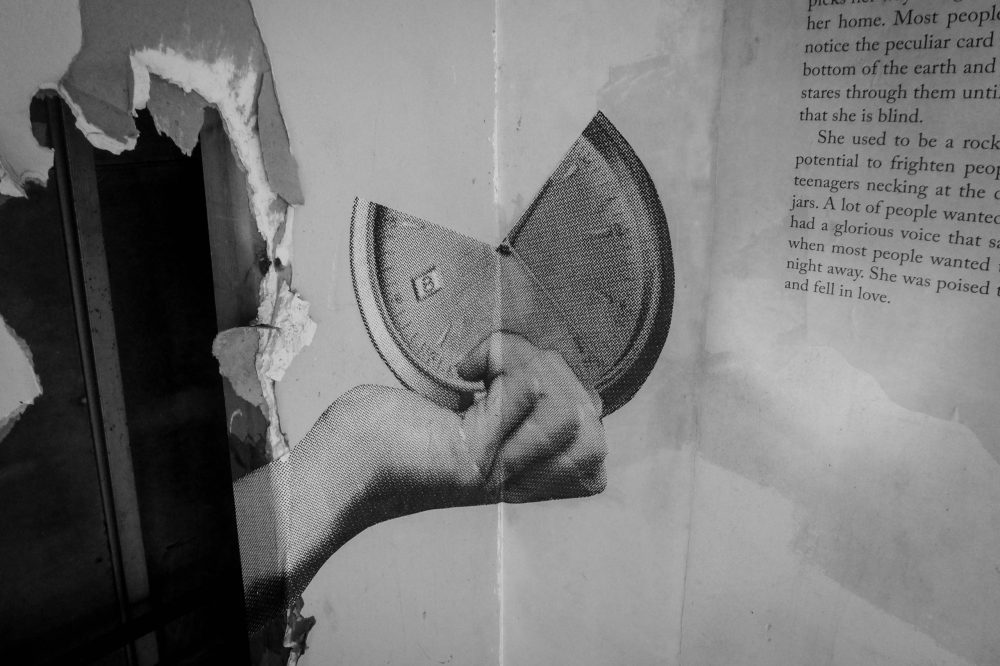
Part Two
Every afternoon she makes the two-hour trek to this room where she fell in love, and that’s where you’ve probably seen her, the old woman with silver hair shuffling along General DeGaulle before she veers across an overgrown lawn and picks her way along the fence, feeling for the passage that will bring her home. Most people avoid her but sometimes a passerby will notice the peculiar card in her hand with its backside depicting the bottom of the earth and they’ll ask her to tell their fortune, but she stares through them until they move along. They do not understand that she lost her sight years ago.
She used to be a rock ’n roller, back when music still had the potential to frighten people, to conjure images of teenagers necking at the drive-in and drinking liquor out of fruit jars. A lot of people wanted to talk to her in those days because she had a glorious voice that sang about gravity and Jupiter in an age when most people wanted to rock around the clock and twist the night away. She was poised to be a new kind of star. Then she went and fell in love.
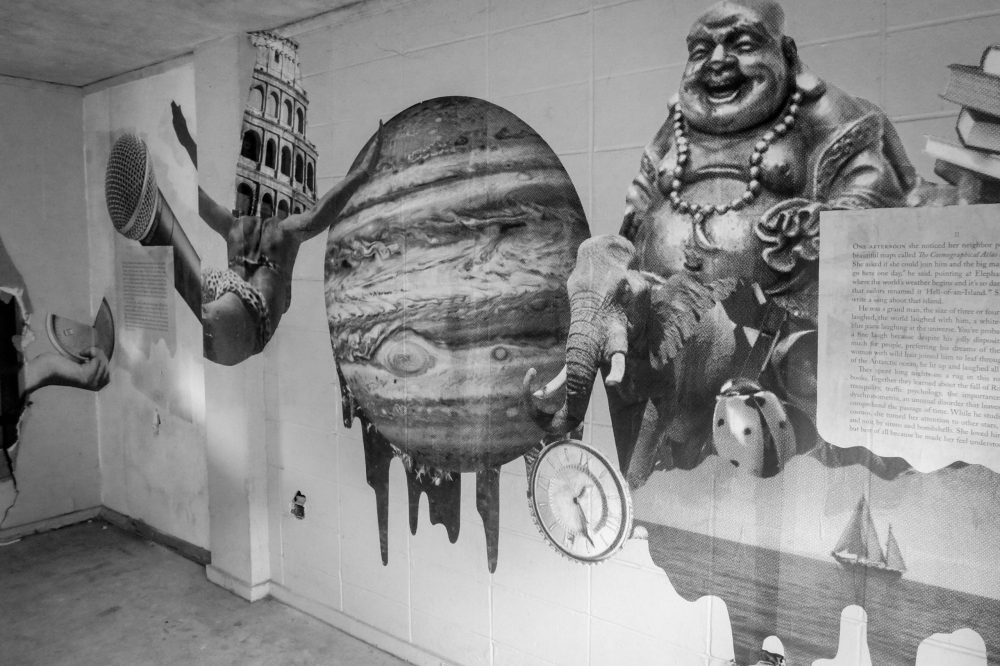
Part Three
One afternoon she noticed her neighbor poring over a book of beautiful maps called The Cosmographical Atlas of the Orbis Terrarum. She asked if she could join him and the big man beamed. “I’d like to go here one day,” he said, pointing at Elephant Island. “It’s down where the world’s weather begins, and it’s so dangerous that sailors renamed it ‘Hell-of-an-Island.’” She said she’d like to write a song about that island. He was a grand man, the size of three or four people and when he laughed, the world laughed with him, a white-bearded Buddha in blue jeans laughing at the universe. You’ve probably never heard such a fine laugh because, despite his jolly disposition, he never cared much for people, preferring his dreams of the sea. Yet when this woman listened to his stories about the Antarctic ocean, he laughed all the time.
They spent long nights on a rug in this room, surrounded by books. They learned about the fall of Rome, the lunar sea of tranquility, traffic psychology, the importance of ladybugs, and dyschronometria, a disorder that leaves a person unable to comprehend the passage of time. While he studied the seas and the cosmos, she turned her attention to other stars, fascinated by neon and noir, by sirens and bombshells. She loved him for many reasons but best of all because he made her feel understood.
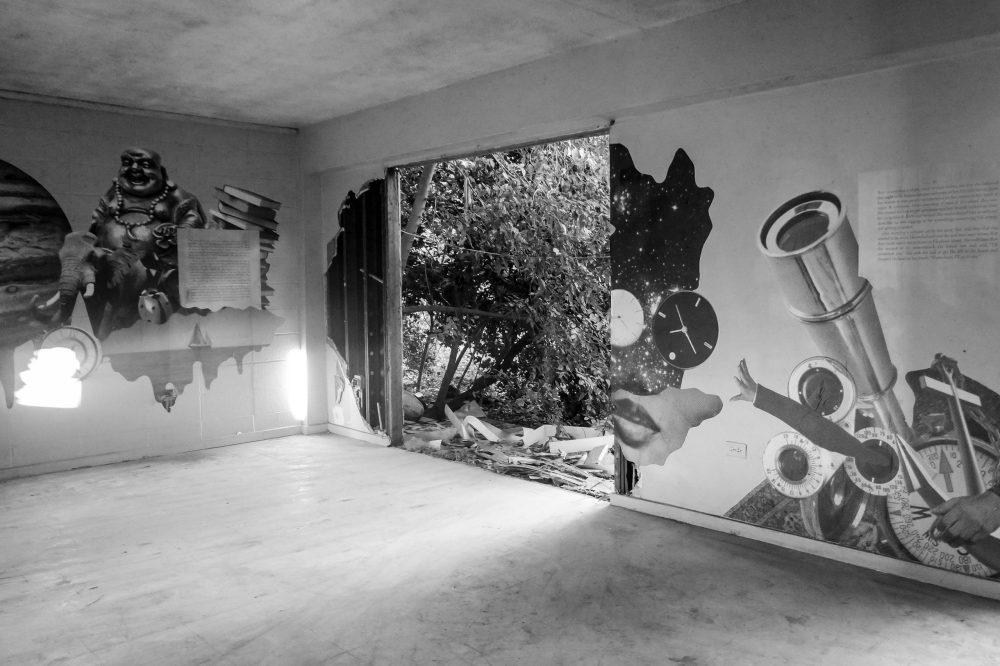
Part Four
But there was always that other thing, the way she believed she ought to be famous because everyone in her life told her so, from her friends to the people on television to the voices in her head at night. Be ambitious. Make something of yourself. Get ahead. Be a star. She waited for him to get ambitious too, but he only looked up from his navigational charts and smiled. She remembered him as soft and slow like he was digging in for something, conserving his energy and getting prepared.
One morning a suitcase sat by the door. She told him that she wanted to be a star. He smiled and said the real stars were better, that they could watch them shine on Elephant Island. She told him that she wanted to be remembered. He kissed her and said, “If you leave, I’ll go to sea.”
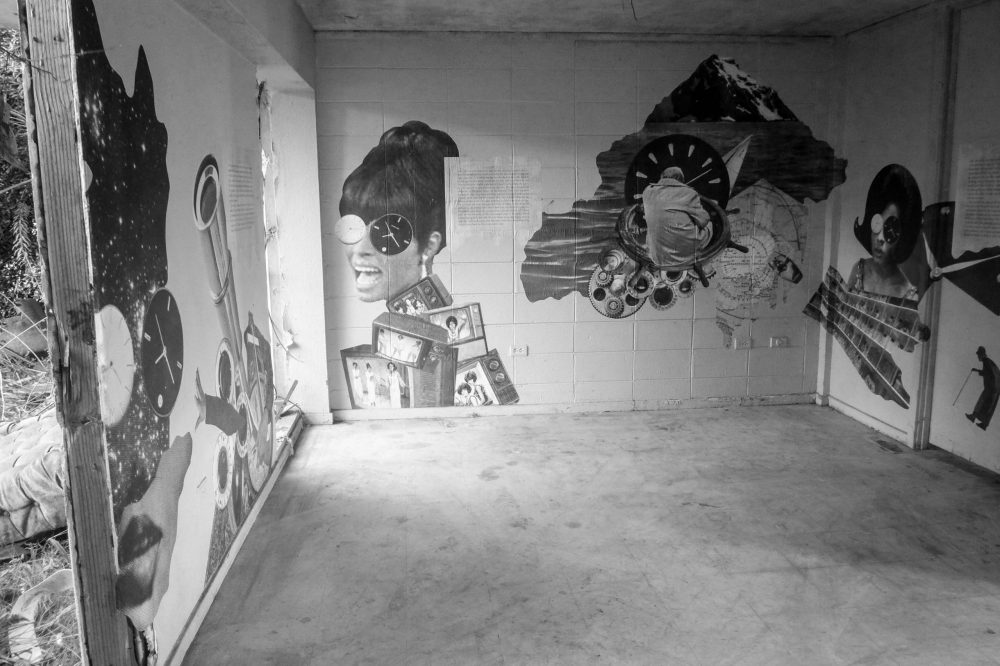
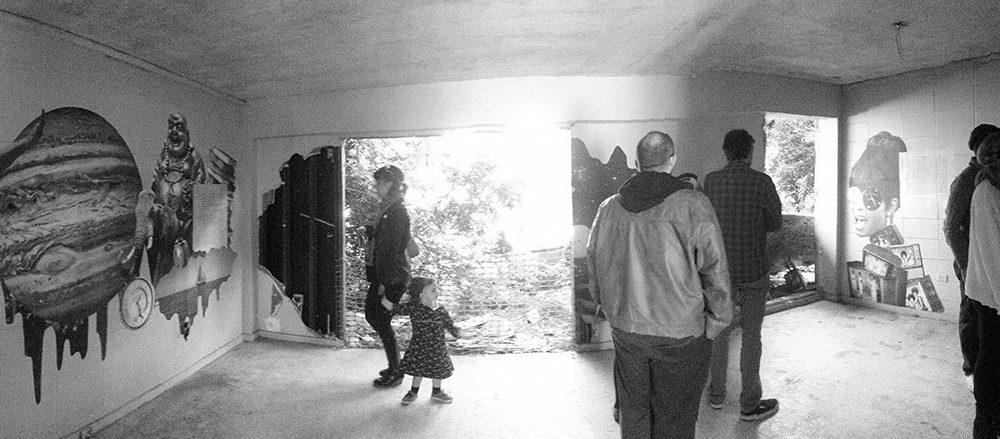
Part Five
She left to try her luck, and she was very lucky and he was damned proud but he could not move, his eyes forever tracing the space near the door where he saw her for the last time. He tried to let her go but this room would not let him and so he went to sea. One morning he caught a glimpse of himself in the Antarctic ocean and he realized he had become an old man. His tears clouded the silhouette of Elephant Island on the horizon. They were big tears because he was a big man, and they smeared his maps, melting the latitude lines and depth markers that had brought him to the bottom of the earth. He could not step on that island without her. He pointed his boat towards the Gulf of Mexico and when he arrived, he discovered their home had been sacrificed for progress. He pulled a pen from the pocket of his coat and dashed off a quick note on the backside of the tear-soaked map before taping it to the wall. Now he floats along the bayou, setting traps for crabs and gazing into the stars, sometimes wondering if he should come back to this room, just in case.
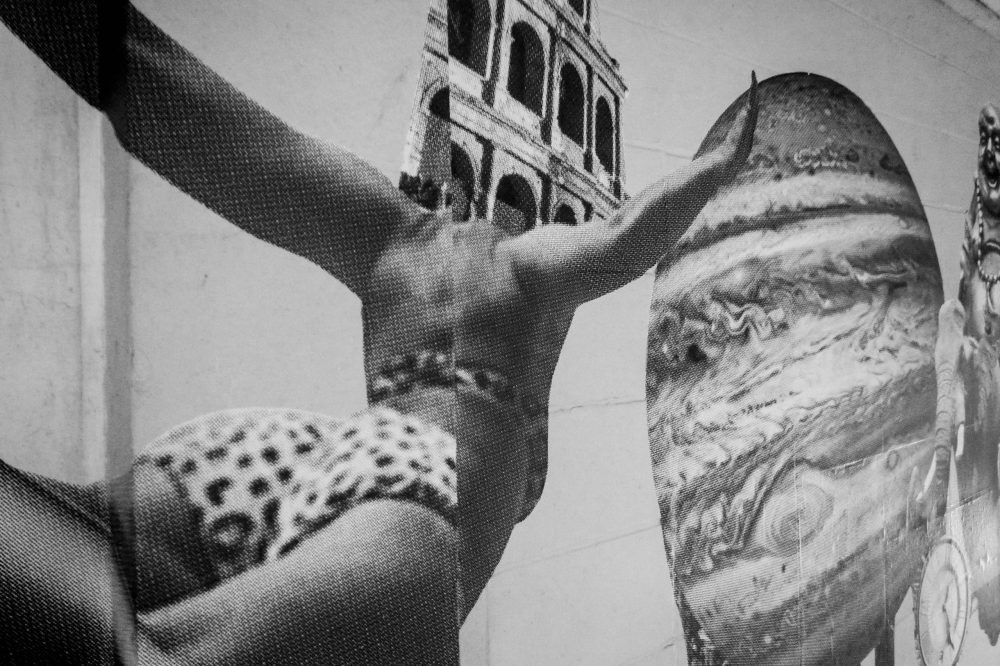
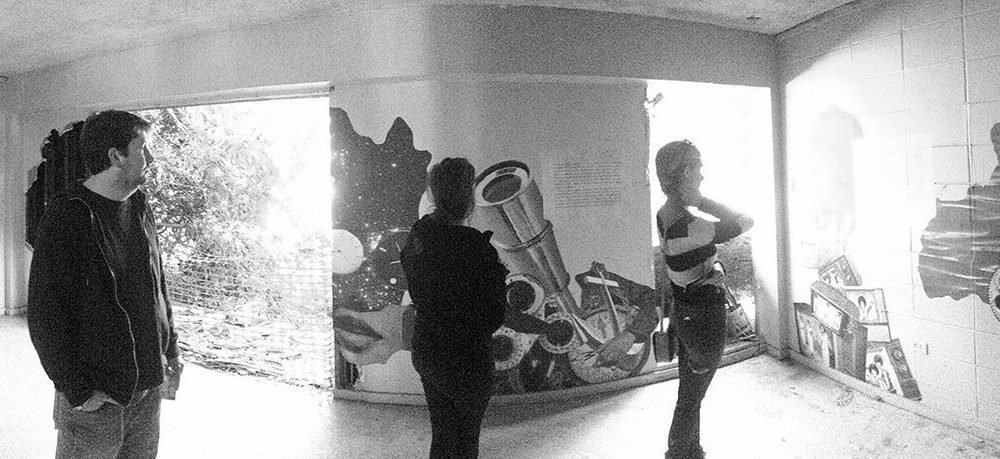
Part Six
She appeared on the April 1974 cover of Rolling Stone after years of dutiful service as a Blossom, a Gypsie, and a Marvelette. She enjoyed stadium tours, tabloid romances, and a hit single called ‘Hell of an Island’, although none of it felt real because he was not there. She needed him as a witness.
She continued climbing out of limousines and giving her signature wave to the crowd, and they loved her until they didn’t anymore. She took a Greyhound back to New Orleans and when she stepped out of the station, she knew he was not there. The city felt sharper, the air thinner.
She reached this room as the sky downshifted from gold to purple and her heart dropped when she saw her home’s crumbling walls and busted windows, the empty doorway that gaped like a wound. She stepped inside but he was not there. Taped to the wall she saw a little map of Elephant Island. On the back it said, I was hoping you would be here. She sat until midnight but he did not appear. She returned every evening for years, even after her vision began to fail. Call it penance, call it hope, but the next time you see her, ask how she’s doing and listen carefully to what she has to say.
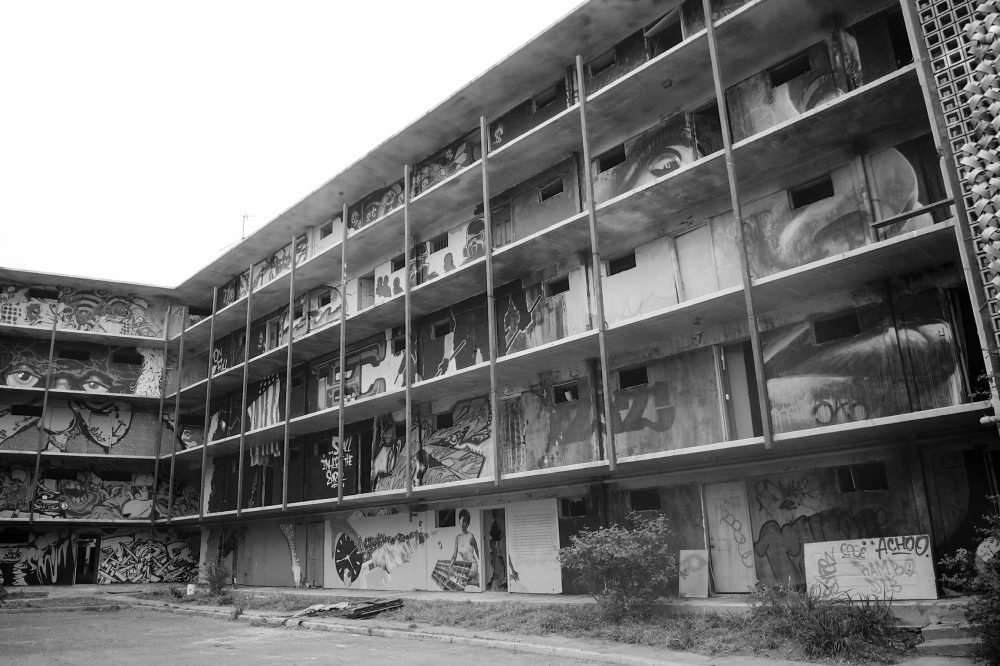
Artwork by Candy Chang, story by James A. Reeves. Part of Exhibit Be, the largest street art exhibit in the American South. The DeGaulle Manor housing complex was built in 1967 with 350 units under the Housing Authority of New Orleans before being sold in 2000. These apartments have passed through many hands and names before being shuttered in 2006. Hopefully they will become homes again. In the meantime, visit Exhibit Be and check out this magnificent space with eye-popping artwork from a dozen New Orleans artists.



